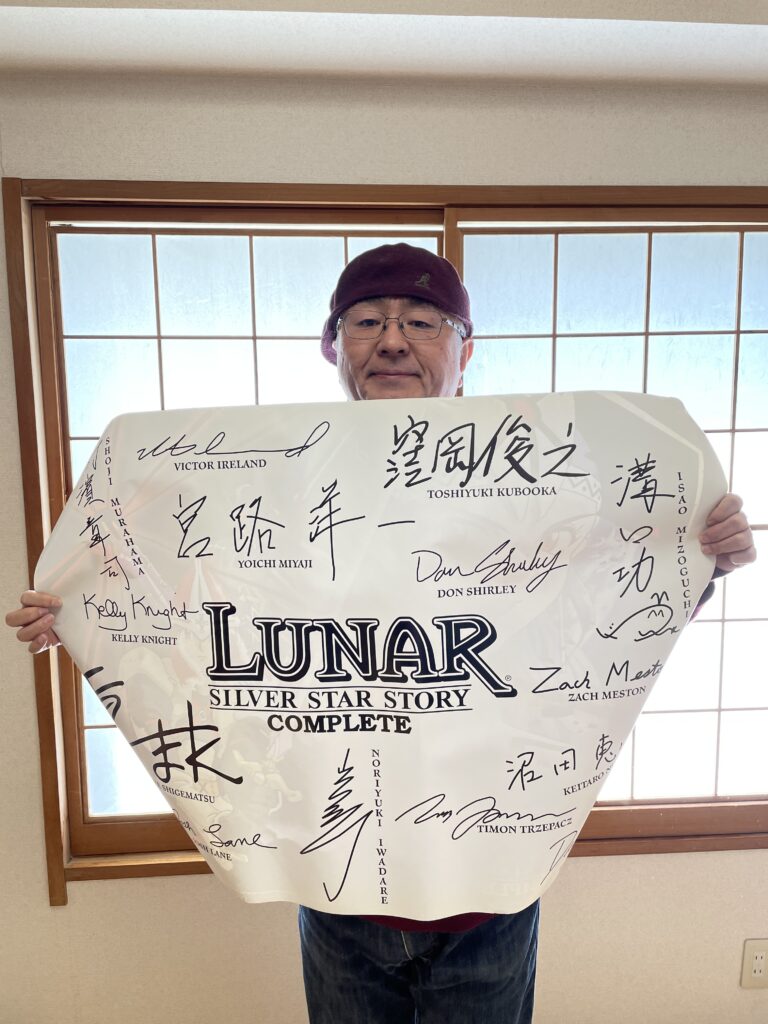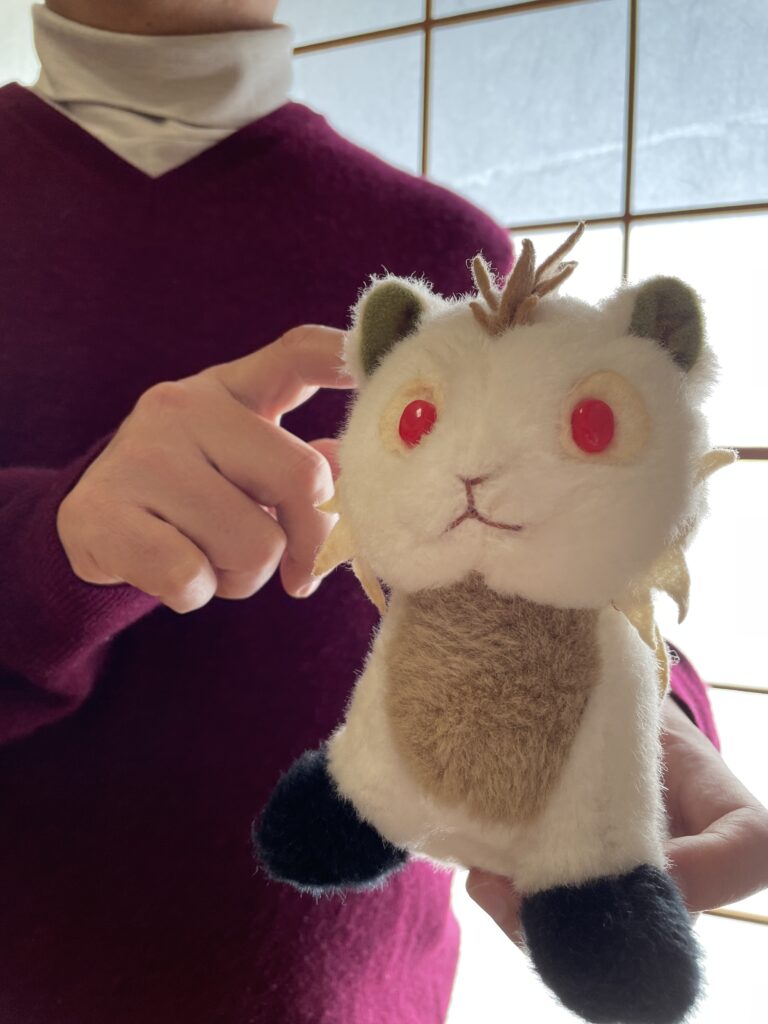
Kei Shigema is an experienced novelist and video game story writer. In addition to his work on Lunar, he is also known for Grandia II and Castlevania: Asura’s Wrath.
Carpe Ludum: Shigema-san, what memories do you have of the development of LTSS for the Mega CD?
Kei Shigema: First of all, I would like to thank everyone who still loves the Lunar series after all these years. The series is very dear to my heart and I am very happy about it. I am proud to have been part of the development team. I worked on the scenario in a small flat rented by Game Arts. I wrote the world, the character development and the main story. Hino-san wrote the sub-scenarios and mainly worked on the Ghaleon story. At first, I couldn’t really see the logic behind Ghaleon’s evil behaviour. Hino-san came up with the idea that he was a revolutionary. That made a lot of sense to me and was reflected in my work. Hino-san literally lived in the apartment, but he didn’t bathe very often; when I went to work in the morning, the smell would be waiting for me (laughs). No, seriously, we were all new to writing RPG scenarios, so we were constantly learning how to make them. In fact, Lunar was originally only going to be released as a module, and the huge amount of extra disc space made us a bit reckless in our writing.
Carpe Ludum: The change from a “silent hero” (Alex in LTSS) to an “expressive hero” (Hiro in LEB) was surprising for fans. Can you explain how that came about?
Kei Shigema: In contemporary RPGs, the protagonists usually didn’t speak, because the protagonist of an RPG was supposed to be the player’s alter ego. So it was “normal” for me. The problem was that there was no way to express the character’s emotions and tell the story. We solved this by giving the main character Alex the “flying cat” Nall, who speaks for him and tells the story on his behalf. So the only time Alex speaks in TSS is at the very end, when he calls out the heroine’s name. But that last scene got me thinking: the divergence between hero and player didn’t just happen because Alex called out the heroine’s name, did it? If the story and scenario are designed so that the protagonist’s thinking, behaviour and emotional changes are in sync with the player’s, then there shouldn’t be any discrepancies. That’s why I initially used Hiro as the speaking protagonist in LEB on a trial basis. I didn’t feel any discomfort myself when I wrote the first part of the scenario. Wouldn’t you be surprised if a mysterious girl appeared out of nowhere? There shouldn’t be any differences between Hiro and you, the player. From then on, I wrote the scenario in such a way that the main character speaks according to her own will.
Carpe Ludum: What inspired you to write so much text for NPCs?
Kei Shigema: A lot of the townspeople’s dialogue, for which Lunar is often praised, was written because we didn’t really understand the gameplay of RPGs. Had we known that, we wouldn’t have done something so reckless. But it’s true that at the time, I wasn’t happy with the typical behaviour of townspeople in JRPGs. Like they were just holding signs. We’re scenario writers, so we wanted to bring the townspeople to life the way a scenario writer can. It’s natural for people who live in this world to have conversations about the changing conditions in the world. We also wanted the protagonist (the player) fighting to save the world to feel that the world is something worth saving. I wanted you to feel that if you know a part of the lives of people who are living life to the fullest, you want to protect the future of those people. If I met a little girl looking forward to the birth of her puppies next spring, I wouldn’t let the world be destroyed tomorrow.
Carpe Ludum: Are the moon and the blue star – the Earth? – as metaphors for our own society or that of the 1990s? What are the sources of the myth of the Lunar series?
Kei Shigema: The Japanese myth of Taketori Monogatari and its heroine, Princess Guguya, is a certain motif (especially for LEB). Hans Christian Andersen’s The Snow Queen is also a motif for the relationship between hero and heroine. I didn’t plan any conscious metaphors about human society. However, I wanted the player to feel nostalgic when they look up at the night sky and see the moon after the game.
Carpe Ludum: What other projects have you worked on that might make longtime Lunar fans feel nostalgic?
Kei Shigema: Lately, I’ve been working more as a director and producer than as a scenario writer. My personal opinion as a scenario writer is that Tales of Destiny 2 (TOD2), which unfortunately was never released outside of Japan, continues the spirit of the Lunar series, from the huge amount of animated scenes and their quality to the beautiful music. In the Lunar series, one of the themes was that the most important thing for the hero of an adventure story was to save the girl, and that the world could be saved by saving the girl. In TOD2, we wanted to go one step further and show how the hero chooses when faced with a choice between the heroine and the world. I also think that Tales of Crestoria has taken on the spirit of Lunar. Although its producer Kumagai-san probably wouldn’t approve of me saying that (laughs).
Carpe Ludum: Shigema-san, thank you very much for the interview, all the best and stay healthy!


Lunar 30th Anniversary Special – Navigation
Introduction | Lunar: The Silver Star | Lunar: Eternal Blue | Lunar: Walking School / Magical School | Lunar: Genesis / Dragon Song | Gaming recommendations and outlook | Interview 1: Kei Shigema | Interview 2: Noriyuki Iwadare
